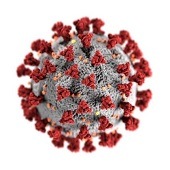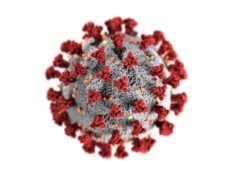 Faced with a need to limit hospital visits and conserve personal protective equipment (PPE) in the wake of COVID-19, an 11-centre, hospital-based anticoagulation monitoring service (AMS) in Ohio, USA, needed to adapt fast. Addressing viewers of VENOUS2021 (17–20 March, virtual), the annual meeting of the American Venous Forum, Kirolus Sourial, Anticoagulation Forum Ansell fellow in vascular medicine at University Hospitals Cleveland Medical Center in Cleveland, USA, relayed that revised protocols resulted in a shift towards home testing and a parallel reduction in reported bleeding.
Faced with a need to limit hospital visits and conserve personal protective equipment (PPE) in the wake of COVID-19, an 11-centre, hospital-based anticoagulation monitoring service (AMS) in Ohio, USA, needed to adapt fast. Addressing viewers of VENOUS2021 (17–20 March, virtual), the annual meeting of the American Venous Forum, Kirolus Sourial, Anticoagulation Forum Ansell fellow in vascular medicine at University Hospitals Cleveland Medical Center in Cleveland, USA, relayed that revised protocols resulted in a shift towards home testing and a parallel reduction in reported bleeding.
The presenter relayed that COVID-19 was first reported in Ohio on 9 March 2020. As part of their pandemic response, Ohio hospitals were required to institute policies regarding essential versus non-essential visits and procedures, limiting patient–provider contact, and conservation of PPE.
Sourial detailed that the 11-centre hospital-based AMS at University Hospitals Cleveland Medical Center monitors warfarin therapy for approximately 1,800 patients using a system-wide face-to-face fingerstick point-of-case testing (PCOT) model for testing and education.
Elaborating on the workings of the system, Sourial explained that it uses a multifaceted approach to limit in-office visits for international normalised ratio (INR) monitoring. This includes discussion with the referring provider regarding the opportunity to use alternative anticoagulants, redistributing patients to lower volume testing centres, increasing visit intervals for low-risk patients with stable INR, and increasing home POCT options for vulnerable patients.
For routine quality monitoring, the speaker noted, reports are generated quarterly regarding AMS enrolment, time in therapeutic range (TTR), INR >5, and patient-reported bleeding. These parameters are constructed into the ambulatory electronic record visit note and can be accessed as needed for quality monitoring, Sourial detailed.
Following the changes to INR monitoring implemented in the wake of COVID-19, Sourial explained that the 11 centres increased the frequency of AMS quality oversite to evaluate the impact on patient care and determine whether additional adjustments were needed for safety. The research team used data from January and February 2020 as a baseline (pre-COVID) and compared these to data from March through July 2020 (post-COVID). Sourial added that the team now have data available through December 2020.
The presenter informed viewers that total enrolment increased slightly from 1,810 patients pre-COVID to 1,831 post-COVID. Regarding home POCT enrolment, he reported a 115% increase, from 33 patients enrolled to 71 patients. Furthermore, he stated that TTR decreased from 61.84% to 60.71%; INR >5 increased from 0.87% to 0.93%; and self-reported bleeding dropped from 0.4% to 0.35%. He added that monthly trends demonstrated an initial decrease in visits, tests, and TTR, before increasing slightly from April through July.
Since July, Sourial detailed that total enrolment has decreased, from 1,632 patients in Q3 to 1,563 in Q4. In terms of home PCOT enrolment, this has continued to increase, from 74 to 84 patients. TTR has returned to near baseline; INR >5 has remained at or below the AMS threshold of 1%; and self-reported bleeding has continued to decrease.
Concluding, Sourial stressed that warfarin therapy requires frequent monitoring to ensure proper anticoagulation and avoid complications. “Face-to-face fingerstick POCT is challenging when social distancing is required for patient and provider safety”, he remarked, adding that early pandemic concerns regarding COVID-19 exposure and the need to limit PPE use required protocol modifications.
Through the protocols introduced in response to COVID-19, Sourial concluded that total visits and enrolment were reduced. While TTR decreased slightly and INR >5 increased slightly, they also report an overall reduction in reported bleeding.
Home POCT enrolment was more than doubled, Sourial told viewers, but stressed that there are limitations of device availability and is not suitable for all patients. Finally, the presenter detailed that many patients and providers refused alternative anticoagulation—direct oral anticoagulants (DOACs)—offered due to cost and patient preference.
University Hospitals Cleveland Medical Center received an Anticoagulation Forum Ansell Fellowship Award, which is awarded by an educational grant from Janssen Biotech and administered by Janssen Scientific Affairs.











